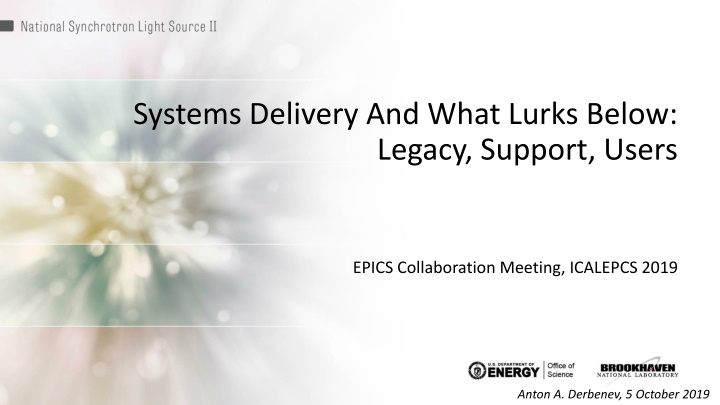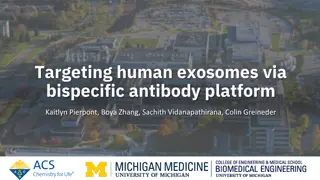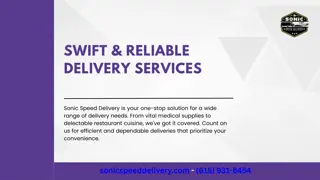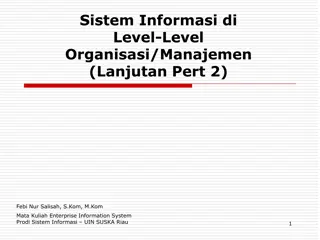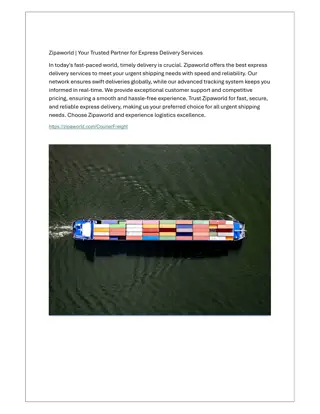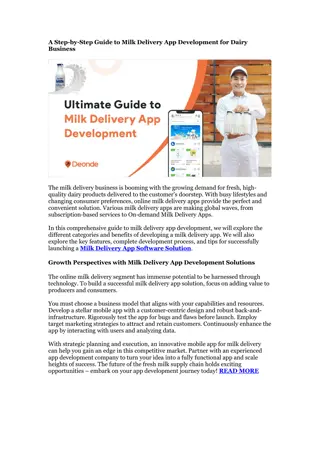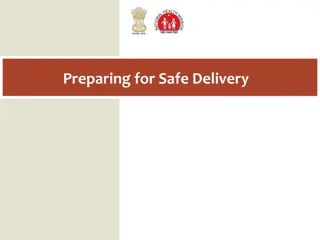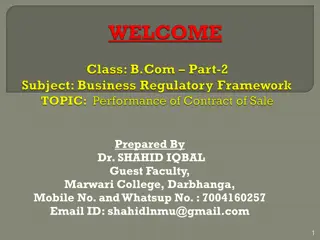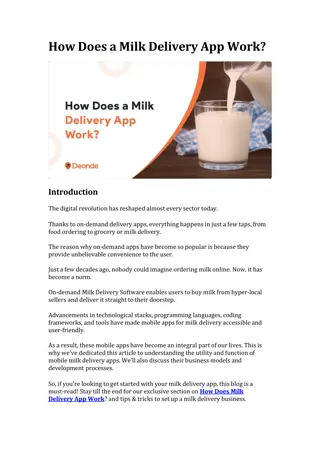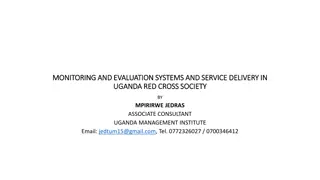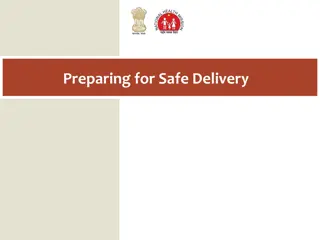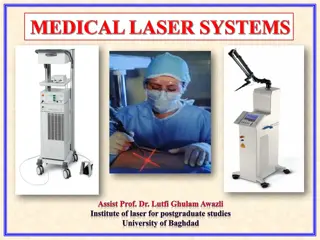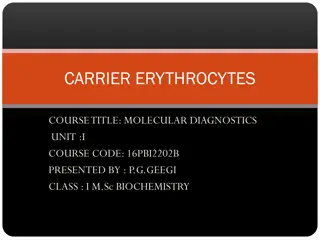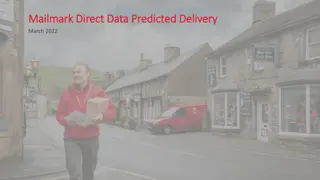Systems Delivery and What Lurks Below
Explore a comprehensive approach to controls software delivery, including version control, development environments, testing setups, and deployment methods. Learn about current practices and trials in EPICS delivery using tools like SNACK and GitLab CI/CD for building, deployment, and configuration management.
Download Presentation

Please find below an Image/Link to download the presentation.
The content on the website is provided AS IS for your information and personal use only. It may not be sold, licensed, or shared on other websites without obtaining consent from the author.If you encounter any issues during the download, it is possible that the publisher has removed the file from their server.
You are allowed to download the files provided on this website for personal or commercial use, subject to the condition that they are used lawfully. All files are the property of their respective owners.
The content on the website is provided AS IS for your information and personal use only. It may not be sold, licensed, or shared on other websites without obtaining consent from the author.
E N D
Presentation Transcript
Systems Delivery And What Lurks Below: Legacy, Support, Users EPICS Collaboration Meeting, ICALEPCS 2019 Anton A. Derbenev, 5 October 2019
Plan Scope What we do now What we tried What we discovered What we plan to do Conclusion 2
Scope A comprehensive approach to Controls software delivery Not only about the software itself: Version control for code (e.g. EPICS drivers) and configurations (e.g. st.cmd) Development and production environments (base, modules ) Testing setups, build environments Means of deployment and update Now have to consider delivery of the delivery 3
What we do now EPICS base, modules available as Debian packages from NSLS-II repo Debian 8, 9, and 10 in the works Debianized source comes from epicsdeb on GitHub, no EPICS 7 packaging Delivered to IOC systems by puppet Manual builds to get newer stuff (EPICS 7, AreaDetector 3.7 ) Using GitLab and Mercurial for code and configurations IOCs deployed manually, sysv-rc-softioc for running Services deployed manually, configurations are centralized Central repository for OPIs, automatically synced to workstations 4
EPICS delivery Debian repository Repository owner Maintainer Debianized code Code System owner Tester Developer Production Many tasks should be handled for code to become available on production system, and coordination is required to ensure that environment is both stable and up to date Binaries 5
What we tried SNACK, an Ansible-based toolkit for building, deployment, and configuration management [App delivery] Good amount of stable IOCs was converted Currently in use by inclined developers Not a standard solution Binary bundles made available via NFS [Environment delivery] Currently used for newer AreaDetector deployments Comes with tools to upgrade IOCs and create new bundles as updates come GitLab CI/CD for IOCs, Jenkins for services [App delivery] Easy to use, not easy to set up (runners, keys, proxies ) In simplistic proof-of-concept stage for IOCs, limited usage for services Docker etc. [Environment + App delivery] Environment image with base, modules, etc. available in volume Application image, per IOC/app, on host network stack using environment In simplistic proof-of-concept stage 6
Sample EPICS + App delivery One image with EPICS One image per IOC Use volumes, host networking Capitalize on Docker for features (tagging, logs, run control ) Good: it works Bad: so what? 7
Going virtual Switch to containers with known and exact configuration Leave Legacy behind Easy to re-deploy and recover Perform testing in isolation from production Use modern CI/CD tools Actual solutions are easier in Support Users get a well-defined toolkit Capitalize on benefits and tools De-couple from other system considerations Not influenced by external changes, e.g. dependencies, OS, and environment configuration Agnostic to hardware 8
What we discovered No solution is comprehensive Approaches usually target a specific need (see custom build scripts, packaging, SNACK, SUMO, rsync-dist, CI/CD great materials from 2019 France meeting) Lots of questions appear from how do we make it standard, facility-wide? Legacy Many apps exist the old way (in-place, HG ). Are we upgrading? How? Old dependencies are everywhere, incompatible with new solutions Support No solution comes for free maintenance and upgrade are liability There is a reason why DevOps are often considered separately Users Whatever tool or approach, there should be buy-in and adoption Documentation and training cannot be waived 9
What we plan to do Target specific needs instead of all-problems-solutions Procure and deploy hardware, software, and support for general CI/CD Container host machines are standing by for Docker etc. experiments Planning to use Jenkins or GitLab or something properly with builds and testing Enable a consistent route for services deployment and update Phoebus Deliver CS-Studio, Olog, Alarm, Phoebus Take dependencies under control Converge on a standard approach for detector software AD update venue Specifically, AreaDetector binaries and IOCs deployment Try to keep it abstract enough to apply to IOCs in general Decide on future delivery of development/production setups EPICS [7] Put more effort and pressure to Debian packaging? Abstract from beamline environments via virtualization? Use different OS or delivery mechanism? 10
Conclusion The legacy pillow is worn out Refreshments are needed to keep up with systems evolution There are plans to increase investments in delivery 11
Thanks for your attention! Questions? 12
